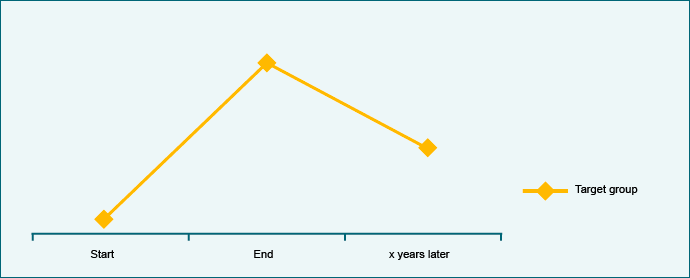
Characteristics
The target group’s development is examined beyond the end of the project.
Example
Three years after the end of the project, 70% of the rural population of Region x live within 15 minutes’ walk of clean drinking water. That is more than before the project, but less than at the end of the project.
| Advantages | Disadvantages |
| The investment in data collection can often be justified. | External influences cannot be excluded, as there is no comparison with a control group. |
| The methodological know-how is often available internally or can be learnt. | It is not clear whether the set objectives have been achieved. |
| A plausible case can be made for whether an intervention has made a contribution to the planned effects or not. | The findings only become available years after the completion of the intervention. |
| It can show whether the intervention was sustainable or not. |
Suitability
It is put to use when the sustainability of an intervention needs to be studied. Due to the time lag, the information is generated too late for short-term legitimising and for immediate steering and learning. It can, however, be used for the organisation’s long-term development and strategic direction.

